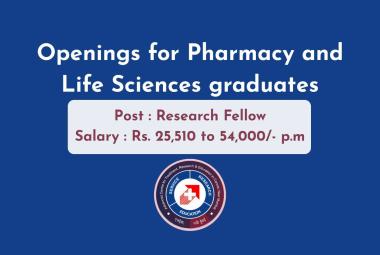Q.1. (b) Define fluorescence and phosphorescence, Explain the effect of structural rigidity, temperature and pH on fluorescence?
Ans.1.(b) Fluorescence &Phosphorescence: Fluorescence is light energy produced by a process where high-energy radiation (such as ultraviolet or X-ray) is absorbed by electrons surrounding an atom and is re-emitted as light energy.
[adsense:336x280:8701650588]
Phosphorescence is light energy produced by a particular type of chemical reactionwhere the excess chemical energy of the reactants is given off as light energy.
Fluorescence is the emission of light by a substance that has absorbed light or other electromagnetic radiation. It is a form of luminescence. In most cases, the emitted light has a longer wavelength, and therefore lower energy, than the absorbed radiation. However, when the absorbed electromagnetic radiation is intense, it is possible for one electron to absorb two photons; this two-photon absorption can lead to emission of radiation having a shorter wavelength than the absorbed radiation. The emitted radiation may also be of the same wavelength as the absorbed radiation, termed "resonance fluorescence".
The most striking examples of fluorescence occur when the absorbed radiation is in the ultraviolet region of the spectrum, and thus invisible to the human eye and the emitted light is in the visible region.
Fluorescence has many practical applications, including mineralogy, gemology, chemical sensors (fluorescence spectroscopy), fluorescent labelling, dyes, biological detectors, and, most commonly, fluorescent lamps.
Phosphorescence is a specific type of photoluminescence related to fluorescence. Unlike fluorescence, a phosphorescent material does not immediately re-emit the radiation it absorbs. The slower time scales of the re-emission are associated with "forbidden"energy state transitions in quantum mechanics. As these transitions occur very slowly in certain materials, absorbed radiation may be re-emitted at a lower intensity for up to several hours after the original excitation.
Commonly seen examples of phosphorescent materials are the glow-in-the-dark toys, paint, and clock dials that glow for some time after being charged with a bright light such as in any normal reading or room light. Typically the glowing then slowly fades out within minutes (or up to a few hours) in a dark room.
In simple terms, phosphorescence is a process in which energy absorbed by a substance is released relatively slowly in the form of light. This is in some cases the mechanism used for "glow-in-the-dark" materials which are "charged" by exposure to light. Unlike the relatively swift reactions in a common fluorescent tube, phosphorescent materials used for these materials absorb the energy and "store" it for a longer time as the processes required to re-emit the light occur less often.
Factors Affecting Fluorescence Efficiency
Structural Rigidity
Collisional deactivation is a major fluorescence quenching mechanism. Therefore, molecules possessing rigid structures are better fluorescers than others which lack rigidity. This explains why fluorene is an excellent fluorescer while biphenyl is a weak one.
Temperature
As temperature is increased, the translational, rotational and vibrational motions of molecules increase. This increases the possibilities of collisions and lead to collisional deactivation and quenching of fluorescence. Therefore, it is always wise to conduct fluorometric measurements at low temperatures
pH
Usually, fluorescers that contain either acidic or basic moieties have fluorescence quantum yields dependent on pH. The pH of these substances should be adjusted so that maximum fluorescence is obtained.









